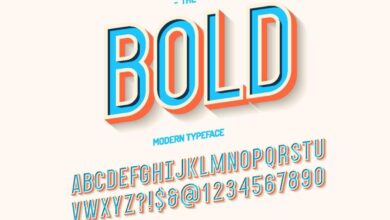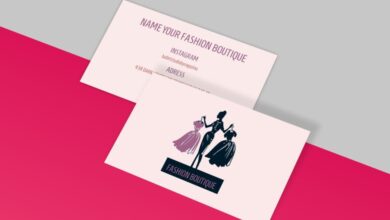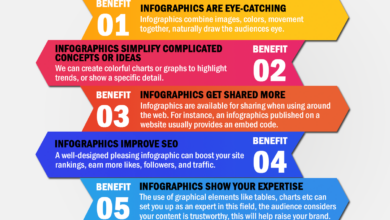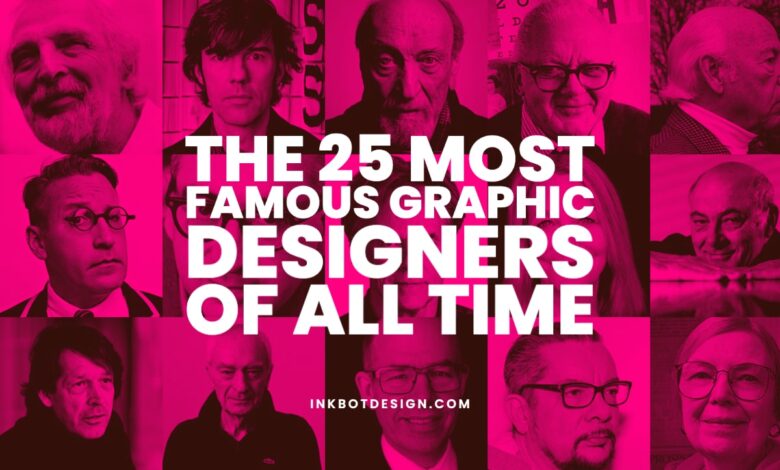
The Top Graphic Designers Shaping Visual Worlds
The top graphic designers aren’t just artists; they’re architects of visual communication, crafting compelling narratives and branding experiences that resonate deeply. They wield color, typography, and imagery with precision, transforming ideas into memorable designs that influence our daily lives. This exploration dives into the world of these creative powerhouses, examining their techniques, the impact of technology on their work, and the business acumen that fuels their success.
From logo design to intricate illustrations and impactful web interfaces, we’ll dissect the diverse specializations within the field, highlighting the unique skills and styles that define the masters of their craft. We’ll look at how they leverage technology, build strong client relationships, and navigate the ever-evolving landscape of the design industry. Get ready for an insightful journey into the minds and methods of the world’s leading graphic designers.
Defining “Top” Graphic Designers
Defining who constitutes a “top” graphic designer is a complex task, lacking a universally agreed-upon metric. The title isn’t simply awarded; it’s earned through a combination of demonstrable skill, industry recognition, and impactful contributions to the field. Several factors contribute to this subjective yet aspirational designation.Criteria for Defining Top Graphic DesignersSeveral key factors contribute to a graphic designer’s recognition as “top” tier.
These include a strong portfolio showcasing innovative and effective design solutions, a history of prestigious awards, an impressive client roster comprising high-profile brands, significant influence on design trends and methodologies, and consistent demonstration of exceptional creative problem-solving skills. The weight given to each factor often varies depending on the context and the specific ranking methodology used.
Award Recognition and Industry Accolades
Awards, such as those presented by organizations like the AIGA (American Institute of Graphic Arts) or D&AD (Design and Art Direction), serve as significant indicators of excellence. Winning multiple prestigious awards demonstrates consistent high-quality work and recognition by peers within the design community. These awards are judged by panels of experienced designers, often involving rigorous evaluation processes, adding weight to the accolades received.
For example, winning a gold medal at the Cannes Lions International Festival of Creativity is a widely recognized achievement in the advertising and design fields, often associated with top-tier graphic designers.
Client Roster and Brand Impact, The top graphic designers
The caliber of a graphic designer’s clientele offers a valuable insight into their skill and reputation. Working with major international brands or influential organizations demonstrates a level of trust and expertise. A client list featuring well-known companies indicates the designer’s ability to consistently deliver high-quality work that meets the demands of large-scale projects and high-profile clients. For instance, a designer who has worked with companies like Nike, Apple, or Coca-Cola is often considered to be among the top professionals in their field.
The impact of their designs on the brand’s success is another key consideration.
Methodologies for Ranking Graphic Designers
Various methodologies exist for ranking graphic designers, each with inherent strengths and weaknesses.
Subjective versus Objective Ranking Methods
Ranking graphic designers involves a blend of subjective and objective methods. Objective methods, such as quantifying award wins or analyzing client revenue generated through design work, provide a numerical basis for comparison. However, these methods often fail to capture the nuances of creative excellence and the impact of a designer’s unique vision. Subjective methods, like peer reviews and expert opinions, acknowledge the qualitative aspects of design, recognizing that aesthetic judgment is inherently subjective.
A balanced approach incorporating both objective and subjective criteria is often necessary to create a more comprehensive and fair ranking system. A purely objective system might overlook designers whose innovative work hasn’t yet garnered widespread awards, while a purely subjective system risks bias and inconsistency.
Identifying Top Graphic Designers by Specialization
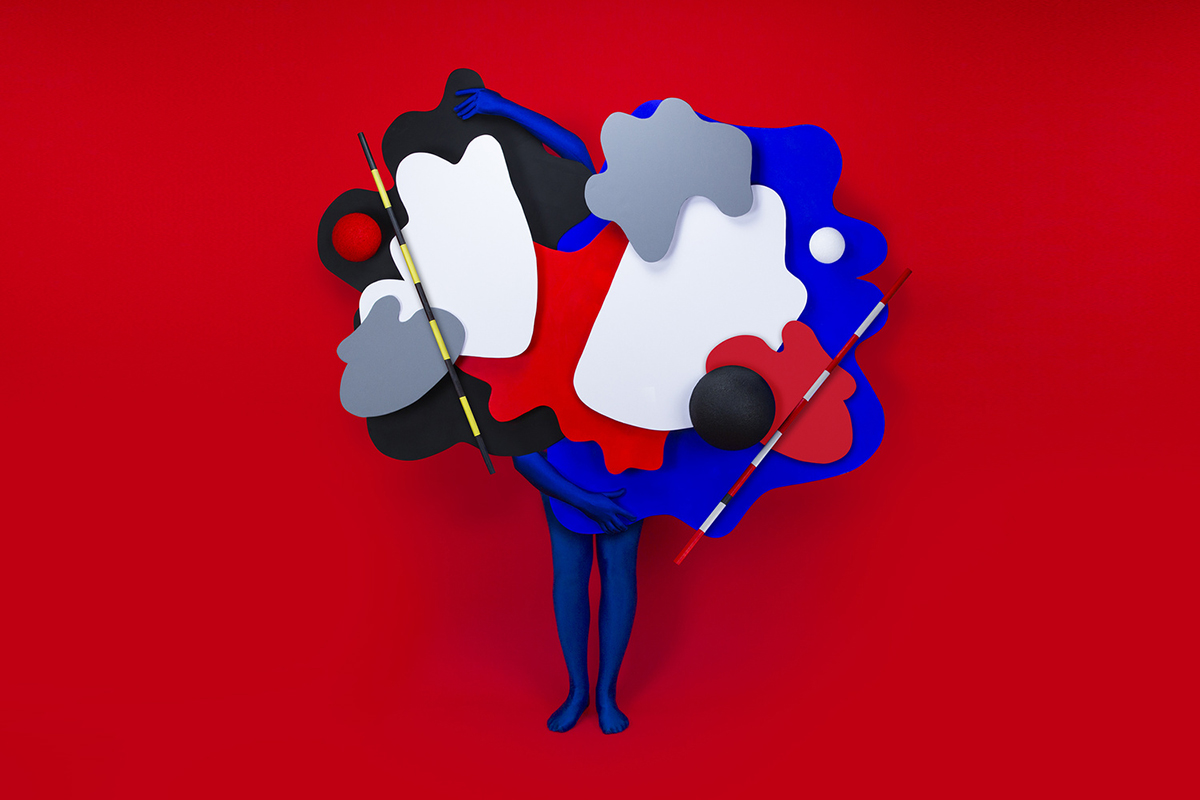
Source: shillingtoneducation.com
Defining “top” is subjective, depending on awards, client recognition, and overall influence. However, we can identify leading figures in various graphic design specializations based on their consistent high-quality work, innovative approaches, and impact on the field. This exploration will delve into specific areas of expertise, examining the unique skills and stylistic choices that define these top designers.
Logo Design
Logo design requires a keen understanding of branding, typography, and visual communication to create a memorable and impactful symbol. Top logo designers often possess a strong understanding of color theory, composition, and the ability to distill a brand’s essence into a concise visual representation. They’re adept at creating logos that are both aesthetically pleasing and strategically effective.
| Designer Name | Specialization | Notable Work | Style |
|---|---|---|---|
| Saul Bass | Logo Design (and more) | AT&T, Quaker Oats, United Airlines logos | Minimalist, iconic, impactful; often using bold shapes and limited color palettes. |
| Paul Rand | Logo Design (and more) | IBM, ABC, UPS logos | Modernist, geometric, utilizing strong visual metaphors and clever use of typography. |
| Chip Kidd | Book cover and logo design | Numerous book covers, including works by Michael Crichton and Jonathan Safran Foer | Eclectic, typographically driven, often reflecting the narrative of the book or brand. |
| Stefan Sagmeister | Logo Design and branding | The Rolling Stones, HBO | Bold, experimental, and often incorporating three-dimensional elements and unconventional materials. |
| Jessica Hische | Lettering and logo design | Numerous logos and hand-lettered projects for clients such as West Elm and Target. | Hand-lettered, playful, often employing vintage-inspired aesthetics and a handcrafted feel. |
Web Design
Top web designers excel in creating user-friendly and visually appealing websites. They seamlessly blend aesthetics with functionality, ensuring a positive user experience. Their expertise encompasses user interface (UI) and user experience (UX) design, alongside proficiency in various coding languages and web development technologies.
| Designer Name | Specialization | Notable Work | Style |
|---|---|---|---|
| Jonathan Ive | Product and Web Design (Apple) | Apple.com (various iterations) | Minimalist, clean, and intuitive interfaces focused on simplicity and elegance. |
| Jeffrey Zeldman | Web Design and Development | Numerous websites and publications on web design best practices | Emphasis on accessibility, standards compliance, and semantic HTML. |
| Cameron Moll | Web Design and UX | Websites for various high-profile clients, known for his writing and speaking on web design. | Focuses on clean, functional, and user-centered designs with a strong emphasis on typography. |
| Jason Santa Maria | Web Design and Branding | Websites for clients like Dropbox and GitHub. | Modern, clean, and responsive designs; often incorporates subtle animations and interactive elements. |
| Vitaly Friedman | Web Design and UX | Smashing Magazine | Focuses on modern design trends, responsive design, and accessibility |
Illustration
Top illustrators demonstrate exceptional drawing skills, a unique artistic style, and the ability to effectively convey a message or emotion through their work. They might specialize in various mediums, such as digital painting, vector art, or traditional techniques like watercolor or ink.
| Designer Name | Specialization | Notable Work | Style |
|---|---|---|---|
| Christoph Niemann | Illustration | Numerous illustrations for The New Yorker and other publications | Witty, conceptual, and often uses everyday objects in unexpected ways. |
| Paula Scher | Illustration and Graphic Design | Numerous posters and branding projects | Bold, graphic, and often uses typography as a key element in her illustrations. |
| Chris Van Allsburg | Children’s book illustration | “The Polar Express,” “Jumanji” | Detailed, atmospheric, and evocative; often uses a muted color palette. |
| Quentin Blake | Children’s book illustration | Illustrations for Roald Dahl books | Whimsical, expressive, and characterized by bold lines and simple forms. |
| Malika Favre | Illustration | Numerous illustrations for magazines and advertising campaigns | Geometric, minimalist, and often uses a limited color palette. |
Branding
Branding designers create comprehensive visual identities for companies, encompassing logos, color palettes, typography, and overall visual communication strategies. They need strong conceptual skills, an understanding of marketing, and the ability to create a cohesive brand experience across all platforms.
| Designer Name | Specialization | Notable Work | Style |
|---|---|---|---|
| David Carson | Branding and Graphic Design | Ray Gun Magazine | Deconstructivist, experimental, and often uses unconventional typography and layouts. |
| Milton Glaser | Branding and Graphic Design | I ♥ NY logo | Classic, timeless, and often uses bold colors and simple shapes. |
| Michael Bierut | Branding and Graphic Design | Branding for numerous major corporations | Modern, clean, and strategic; focused on creating effective and memorable brand identities. |
| Stefan Sagmeister | Branding and Graphic Design | The Rolling Stones, HBO | Bold, experimental, and often incorporating three-dimensional elements and unconventional materials. |
| Pentagram | Branding and Graphic Design (Design firm) | Numerous branding projects for major clients worldwide | Diverse styles reflecting the individual designers within the firm, but always maintaining a high level of quality and innovation. |
Analyzing the Work of Top Graphic Designers

Source: webflow.com
The work of top graphic designers isn’t simply aesthetically pleasing; it’s a masterful blend of technical skill and creative vision, effectively communicating a message and achieving a specific goal. Analyzing their work reveals consistent application of fundamental design principles, resulting in impactful and memorable designs. Understanding these principles provides valuable insights for aspiring designers.
Top graphic designers consistently demonstrate a sophisticated understanding and application of core design principles. This involves a deep understanding of color theory, typography, and composition, skillfully weaving these elements together to create visually compelling and effective designs. Their work often transcends mere aesthetics, becoming a powerful tool for communication and brand building.
Color Theory Application in Top Graphic Design
The strategic use of color is paramount in impactful design. Top graphic designers understand the psychological impact of color and leverage this knowledge to evoke specific emotions and associations. For example, vibrant hues might be used to create energy and excitement, while muted tones could convey sophistication and calmness. They often utilize color palettes that are both aesthetically pleasing and strategically aligned with the brand or message they are conveying.
Consider the bold, primary color schemes often employed by Saul Bass in his iconic film posters, contrasting sharply with the more subdued, earth-toned palettes favored by designers like Paula Scher in her corporate branding work. This demonstrates how different designers utilize color to achieve distinct stylistic and communicative effects.
Typography and its Role in Top Graphic Design
Typography is more than just selecting a font; it’s about crafting a visual hierarchy and establishing a tone. Top designers carefully consider the readability, legibility, and aesthetic impact of typography. They understand the nuances of different font families, their historical context, and their emotional connotations. The choice of typeface often directly reflects the brand’s personality and the overall message.
For instance, a playful script font might be used for a children’s book, while a bold sans-serif font could project confidence for a corporate identity. The spacing, kerning, and leading (line spacing) are also meticulously considered to ensure optimal readability and visual harmony.
Compositional Techniques Employed by Top Graphic Designers
Composition refers to the arrangement of elements within a design. Top graphic designers are masters of composition, utilizing principles like the rule of thirds, golden ratio, and visual weight to create balanced and engaging designs. They understand how to guide the viewer’s eye through the design, leading them to the most important information. This might involve strategically placing focal points, using leading lines, or creating visual flow through the arrangement of shapes, images, and text.
The use of negative space (empty space) is also a crucial compositional element, often used to create visual breathing room and emphasize key elements. A comparison of the minimalist compositions of Dieter Rams, with their emphasis on negative space and functionality, to the densely layered and richly textured compositions of Art Deco designers illustrates the vast range of compositional approaches employed by top designers.
Comparative Analysis of Three Top Graphic Designers’ Styles
Let’s compare the distinct styles of three renowned graphic designers: Saul Bass, Paula Scher, and Massimo Vignelli. Saul Bass, known for his iconic film posters, employed a minimalist style characterized by bold shapes, strong colors, and striking typography. His designs were often symbolic and highly impactful, effectively conveying the essence of the film in a single image. Paula Scher, on the other hand, is celebrated for her vibrant and eclectic style, often incorporating hand-drawn elements, collage, and a playful use of typography.
Her designs are characterized by their energy and personality, reflecting a more expressive and less restrained approach. Massimo Vignelli, a proponent of modernist design principles, favored a clean, highly structured, and geometric style. His designs are known for their simplicity, clarity, and timeless elegance, emphasizing functionality and order. These three designers, while vastly different in their approaches, all share a mastery of the fundamental design principles, demonstrating the versatility and adaptability of these principles in achieving distinct stylistic outcomes.
The Impact of Technology on Top Graphic Designers
The rise of digital technology has fundamentally reshaped the landscape of graphic design, empowering top designers with unprecedented creative control and efficiency. From the initial adoption of desktop publishing software to the current wave of AI-assisted tools, technological advancements have continuously redefined the possibilities and workflows of this creative profession. This evolution has not only increased productivity but also opened doors to entirely new design aesthetics and approaches.Advancements in design software and technology have significantly impacted the work of top graphic designers by automating previously time-consuming tasks, allowing for greater precision and detail, and enabling the exploration of novel design techniques.
The shift from manual techniques like hand-lettering and airbrushing to digital tools has drastically altered the creative process, creating a faster, more iterative, and collaborative environment. This technological shift has also democratized access to high-quality design tools, fostering a more diverse and globally connected design community.
Innovative Design Techniques Enabled by New Technologies
The introduction of vector graphics software like Adobe Illustrator revolutionized logo design, allowing for infinitely scalable artwork without loss of quality. Three-dimensional modeling software, such as Cinema 4D and Blender, has enabled the creation of photorealistic and highly stylized visuals for branding, packaging, and advertising campaigns. Furthermore, the emergence of generative design tools, powered by artificial intelligence, is pushing the boundaries of creative exploration by automating the design process and generating unique visual solutions based on specified parameters.
These tools allow designers to explore a wider range of possibilities than ever before, leading to innovative and unexpected results. For example, a designer might input specific brand guidelines and desired aesthetics into a generative design tool, resulting in hundreds of unique logo concepts to choose from, drastically speeding up the initial design phase.
A Hypothetical Workflow for a Top Graphic Designer
Let’s imagine a top graphic designer tasked with creating a comprehensive branding package for a new sustainable fashion company. Their workflow might begin with initial client meetings using video conferencing tools like Zoom, followed by mood board creation and concept sketching using Adobe Photoshop and Procreate on an iPad. They would then refine the logo design in Adobe Illustrator, ensuring scalability and consistency across various applications.
For packaging design, they might utilize Cinema 4D to create 3D mockups, integrating realistic textures and lighting. Throughout the process, they would leverage cloud-based collaboration platforms like Figma to share designs with clients and internal teams, fostering real-time feedback and iterative refinements. Finally, the high-resolution files would be prepared for print and digital media using Adobe InDesign and exported in various formats using specialized plugins and automation tools.
This entire process, facilitated by a sophisticated suite of digital tools, allows for efficiency and precision that would have been unimaginable just a few decades ago.
The Business of Top Graphic Designers
The path to becoming a top graphic designer isn’t solely paved with artistic talent; it requires a shrewd understanding of the business side. Success hinges on more than just creating stunning visuals; it demands strategic planning, effective marketing, and the cultivation of lasting client relationships. This section explores the key business strategies employed by leading graphic designers to build and sustain thriving careers.
Top graphic designers understand that their creative work is a product, and like any product, it needs to be marketed and sold effectively. They don’t just wait for clients to come to them; they actively seek opportunities and build a strong brand presence. This involves a multifaceted approach encompassing networking, self-promotion, and the cultivation of strong client relationships.
Networking Strategies for Success
Networking is paramount for top graphic designers. It’s not just about collecting business cards; it’s about building genuine relationships with other professionals in the industry. These connections can lead to collaborations, referrals, and valuable insights into market trends. Successful networking involves attending industry events, joining professional organizations, and actively participating in online communities.
Effective Marketing and Self-Promotion
Effective marketing and self-promotion are crucial for visibility. Top designers often build a strong online presence through a professional website showcasing their best work, and active engagement on social media platforms like Behance, Instagram, and Dribbble. They strategically use these platforms to highlight their skills, share their creative process, and engage with potential clients. Beyond online presence, they also utilize traditional marketing methods like print portfolios and targeted advertising when appropriate.
Building and Maintaining Strong Client Relationships
Strong client relationships are the cornerstone of a successful design career. Top designers prioritize clear communication, active listening, and a collaborative approach throughout the design process. They understand the importance of managing client expectations, delivering projects on time and within budget, and exceeding client expectations whenever possible. This fosters trust and loyalty, leading to repeat business and valuable referrals.
Pricing and Business Models
Determining appropriate pricing is a crucial aspect of the business. Top designers often employ different pricing models, including hourly rates, project-based fees, and retainer agreements. The choice of model depends on the complexity of the project, the client’s budget, and the designer’s experience and expertise. Many successful designers have established clear terms and conditions to protect their interests and ensure smooth project execution.
Financial Management and Business Planning
Effective financial management is essential for long-term sustainability. Top graphic designers often work with accountants or financial advisors to manage their finances, track expenses, and plan for future growth. They understand the importance of setting aside funds for taxes, retirement, and unexpected expenses. Many also create comprehensive business plans to guide their career trajectory and ensure sustainable growth.
Illustrative Examples of Top Graphic Designers’ Work
Exploring the work of top graphic designers reveals not only stunning visuals but also a deep understanding of design principles and their effective application. Analyzing specific pieces allows us to appreciate the thought process and skill involved in creating impactful designs.
Saul Bass’s “Vertigo” Poster
Saul Bass, a master of minimalist design, created iconic posters for films, and his work for Alfred Hitchcock’s
Vertigo* is a prime example. The poster features a striking, almost abstract image
So you’re interested in the top graphic designers? Their work is often stunning, but reaching a wider audience requires smart marketing. That’s where understanding YouTube comes in; check out this guide on getting it on with youtube to see how the best designers leverage the platform. Ultimately, a strong online presence is crucial for any top graphic designer to build their brand and find new clients.
a stylized woman’s face, fragmented and distorted, rendered in a limited palette of deep reds and blacks. The typography is simple and bold, using a stark sans-serif font that complements the graphic’s unsettling feel. The layout is deliberately unbalanced, further emphasizing the film’s themes of disorientation and psychological unease. The fragmented image visually represents the fractured reality experienced by the protagonist, while the color palette adds to the overall mood of suspense and mystery.
The impact lies in its ability to convey the essence of the film’s narrative with minimal elements, relying on visual metaphor and evocative color choices to create a lasting impression.
Milton Glaser’s “I ♥ NY” Logo
Milton Glaser’s “I ♥ NY” logo is a perfect illustration of a design’s ability to transcend its initial purpose and become a cultural icon. The design process involved simplifying the message to its core components: the expression of love for New York City. Glaser’s choice of a simple, bold sans-serif font paired with the iconic heart symbol is a testament to the power of minimalism.
The use of red and white – colors associated with love and purity – adds a further layer of meaning. The layout is straightforward, yet instantly recognizable and memorable. The logo’s success stems from its clarity, simplicity, and its ability to evoke strong emotional responses, effectively communicating a sense of affection and pride in the city. Its lasting impact is evident in its widespread use and adaptation across various media.
Chip Kidd’s Book Cover for
The Wonderful Wizard of Oz*
The Wonderful Wizard of Oz*
Chip Kidd, renowned for his innovative book cover designs, created a memorable cover for a new edition ofThe Wonderful Wizard of Oz*. This design successfully communicated the book’s essence through clever use of visual metaphors and a playful approach. The cover depicts a pair of ruby slippers amidst a field of poppies, subtly hinting at the story’s key elements.
The typography is carefully chosen to evoke a sense of nostalgia and whimsy. The color palette is vibrant yet subdued, reflecting the magical yet grounded nature of the story. The overall layout creates a sense of depth and intrigue, inviting the reader to delve into the world of Oz. The design effectively communicates the book’s magical and adventurous spirit, appealing to both long-time fans and new readers alike.
The design’s impact lies in its ability to capture the spirit of the original while offering a fresh, modern interpretation.
Concluding Remarks
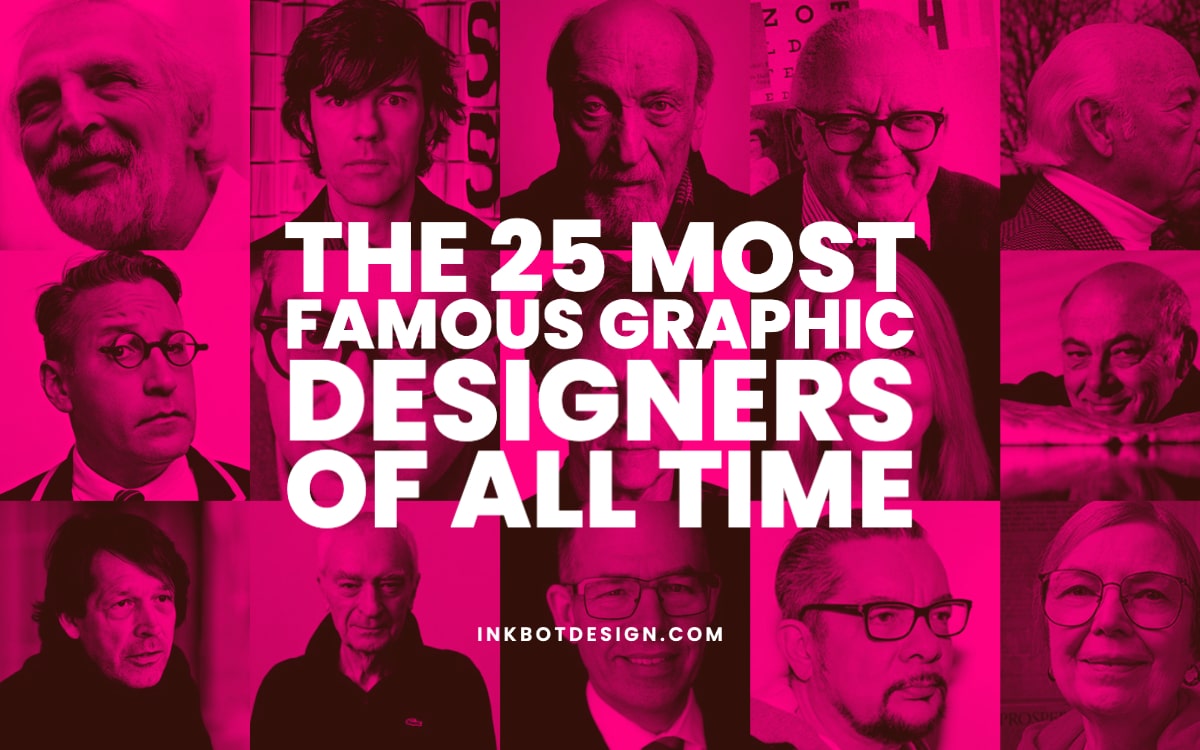
Source: inkbotdesign.com
Ultimately, the top graphic designers are more than just skilled technicians; they’re visionary storytellers. Their work transcends mere aesthetics; it’s a powerful blend of creativity, technical expertise, and a deep understanding of human psychology. By analyzing their processes, strategies, and the impact of technology, we gain a deeper appreciation for the art and business of design. It’s a field constantly evolving, pushing boundaries, and inspiring us all to see the world in a new light – one beautifully crafted design at a time.
Clarifying Questions: The Top Graphic Designers
How do I find a top graphic designer for my project?
Start by defining your project needs and budget. Then, research designers online, check their portfolios, and read client testimonials. Consider referrals and networking within your industry.
What’s the average salary for a top graphic designer?
Salaries vary greatly based on experience, location, and specialization. Top designers can earn six-figure salaries, while those starting out may earn less.
How long does it take to become a top graphic designer?
There’s no set timeline. It requires years of dedicated practice, continuous learning, building a strong portfolio, and networking within the industry.
What software do top graphic designers use?
Adobe Creative Suite (Photoshop, Illustrator, InDesign) is widely used, along with other specialized software depending on the project and designer’s preferences.


